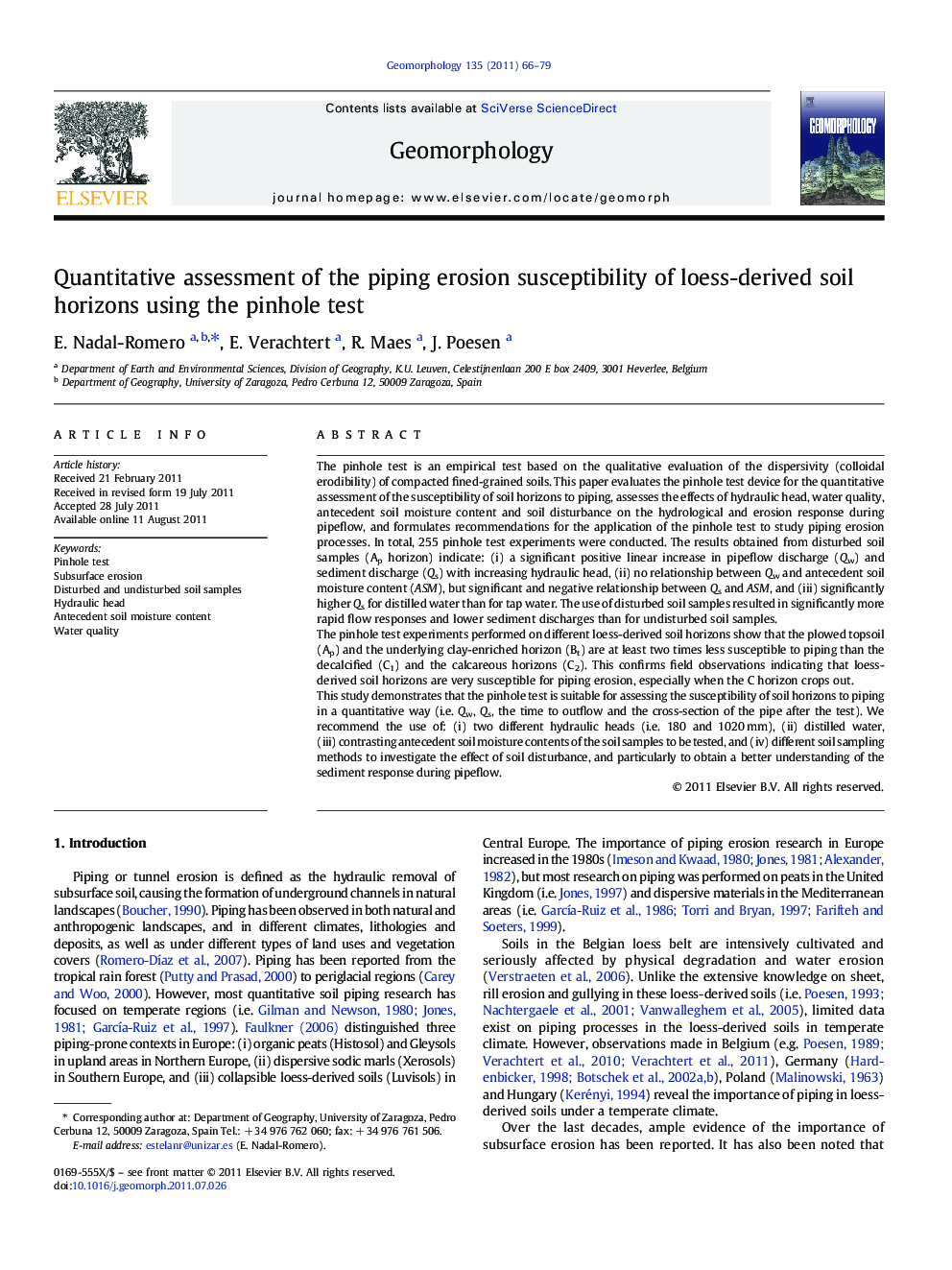| Article ID | Journal | Published Year | Pages | File Type |
|---|---|---|---|---|
| 4685431 | Geomorphology | 2011 | 14 Pages |
The pinhole test is an empirical test based on the qualitative evaluation of the dispersivity (colloidal erodibility) of compacted fined-grained soils. This paper evaluates the pinhole test device for the quantitative assessment of the susceptibility of soil horizons to piping, assesses the effects of hydraulic head, water quality, antecedent soil moisture content and soil disturbance on the hydrological and erosion response during pipeflow, and formulates recommendations for the application of the pinhole test to study piping erosion processes. In total, 255 pinhole test experiments were conducted. The results obtained from disturbed soil samples (Ap horizon) indicate: (i) a significant positive linear increase in pipeflow discharge (Qw) and sediment discharge (Qs) with increasing hydraulic head, (ii) no relationship between Qw and antecedent soil moisture content (ASM), but significant and negative relationship between Qs and ASM, and (iii) significantly higher Qs for distilled water than for tap water. The use of disturbed soil samples resulted in significantly more rapid flow responses and lower sediment discharges than for undisturbed soil samples.The pinhole test experiments performed on different loess-derived soil horizons show that the plowed topsoil (Ap) and the underlying clay-enriched horizon (Bt) are at least two times less susceptible to piping than the decalcified (C1) and the calcareous horizons (C2). This confirms field observations indicating that loess-derived soil horizons are very susceptible for piping erosion, especially when the C horizon crops out.This study demonstrates that the pinhole test is suitable for assessing the susceptibility of soil horizons to piping in a quantitative way (i.e. Qw, Qs, the time to outflow and the cross-section of the pipe after the test). We recommend the use of: (i) two different hydraulic heads (i.e. 180 and 1020 mm), (ii) distilled water, (iii) contrasting antecedent soil moisture contents of the soil samples to be tested, and (iv) different soil sampling methods to investigate the effect of soil disturbance, and particularly to obtain a better understanding of the sediment response during pipeflow.
► The pinhole test is suitable for the quantitative assessment of the piping erosion. ► The test confirms the effect of hydraulic head, water quality and moisture content. ► Loess-derived soil horizons are very susceptible for piping erosion. ► The calcareous loess horizon is the most susceptible for piping erosion. ► Recommendations were established to obtain a better understanding of piping processes.
